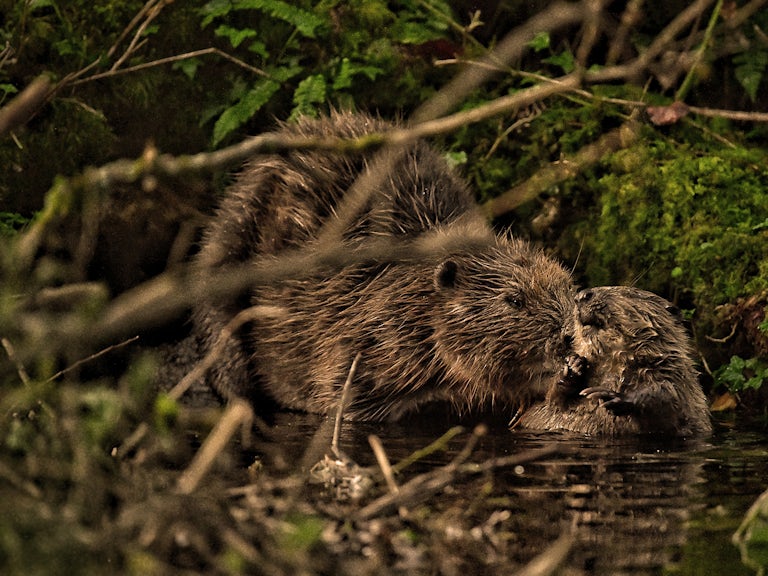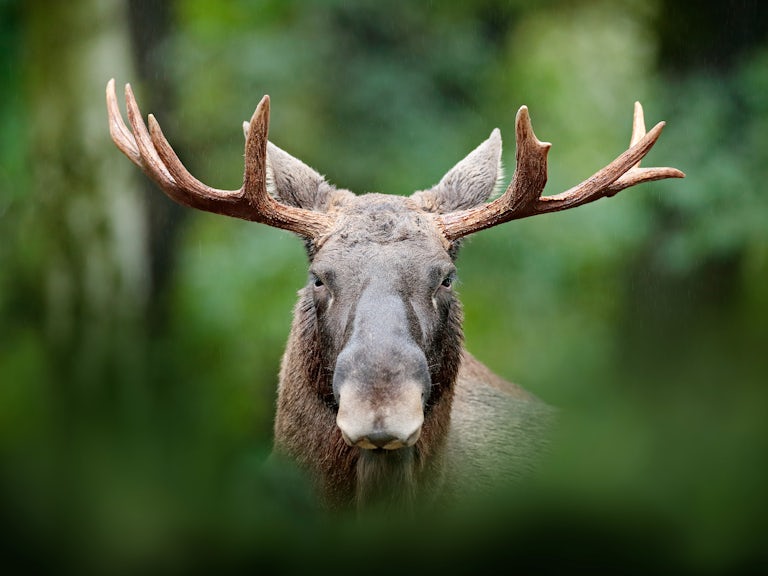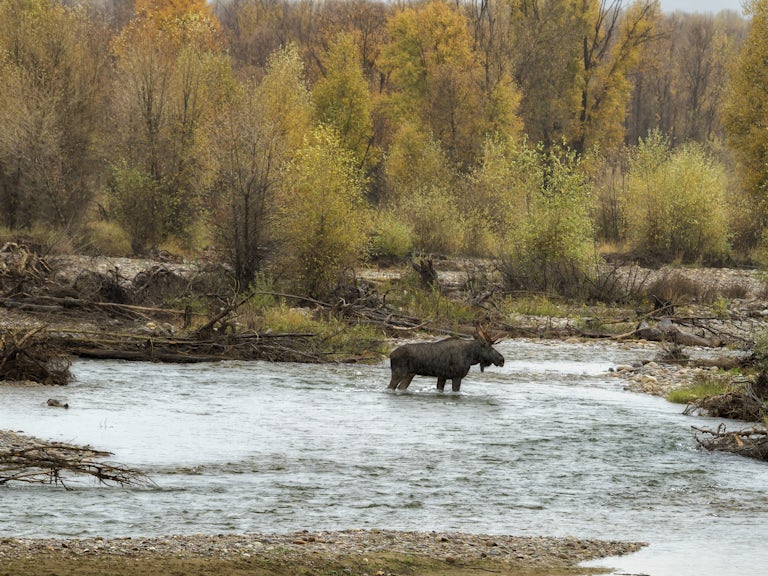The Return of the Native
We celebrate the rewilding trailblazers who’ve helped bring beavers back into Britain’s landscapes.

Published 20/05/2025
It was a real milestone for rewilding this spring when two pairs of beavers were released into the wild in Dorset; the first under the government’s new licensing for England. Rewilding Britain’s Sara King celebrates the early rewilding trailblazers who helped pave the way for this historic moment – and urges us to turn our sights to returning a range of enigmatic keystone species to Britain’s landscapes, from eagles to elk.
Beavers have a special place in my heart. Visiting a beaver enclosure in Devon more than 10 years ago opened my eyes to rewilding and the power of keystone species. There was no going back! To witness the complexity that beaver wetlands supported was incredible. Pools of water, canals, complex streams, deadwood, meadows, coppiced trees – this enclosure had the lot. And the abundance of life was incredible.
I’m so grateful to those landowners and land managers that acted as early movers and disruptors by reintroducing the Eurasian beaver (Castor fiber) to their land 400 years after it was hunted to extinction – albeit behind fences. They really did change our perception of what Britain’s landscapes could look like, giving us a taste of the rich ecosystems we could have, if only missing species were returned.

“There is nothing quite like seeing a beaver reinforcing a dam, gnawing down a tree or making an almighty noise with a tail slap as the sun sets.”

Sara King
Rewilding Manager
Beaver benefits
Hunted to extinction on mainland Britain for their fur, meat and scent glands, beavers are now set to play a crucial role in ecosystem restoration. They accelerate nature recovery by creating changing dynamic wetlands which, in turn, support a huge variety of species. They also slow the flow and store high volumes of water behind their dams, reducing flooding downstream. During hotter and drier summers, they hold water in the landscape for longer. Beavers are also amazing at reconnecting us with nature. Where beavers are present, visitor numbers generally increase.[1]
I was lucky enough to see beavers in the wild on the River Otter last year and saw the number of people travelling to the area specifically to catch a glimpse of them (16,000 visitors were recorded to the River Otter during the trial). We’re seeing a growing number of education programmes and wellbeing programmes on rewilding projects centred around beavers and the impact they have.

The story so far
Britain’s first licensed beaver enclosure release took place in 2001 at Ham Fen in Kent. Beaver enclosure projects played a vital role back then — they showed how beavers shape our landscapes and allowed us to understand their role in flood mitigation and drought management.
The research and knowledge gained from these projects has been invaluable in getting to where we are today. They also provided the opportunity to show how beavers can live alongside people and enhance our connection with nature. There’s nothing quite like seeing a beaver reinforcing a dam, gnawing down a tree or making an almighty noise with a tail slap as the sun sets.
Many rewilding projects in England were inspired by the Ham Fen example and worked hard to complete the paperwork, to fund expensive fencing and to challenge the licensing system. Needless to say, we wouldn’t be where we are now without their persistence and determination. Thanks to these efforts – combined with focused campaigning and advocacy work by charities including Beaver Trust and Rewilding Britain – we saw the first licenced wild beaver release in Dorset’s Purbeck Heath Super National Nature reserve in March. It was a true milestone moment for rewilders in England.
Where next?
But this is not the end of the story, there is much work yet to be done across Britain. Since that media moment in Dorset, there have been no further wild beaver releases in England – and those first movers with enclosures have been offered no support to fast track taking down their costly fencing. We truly need beavers back in Britain’s landscapes – not just to reach our international targets for nature recovery, but to help us mitigate the extreme impacts of climate heating, including intense storms and droughts.
In Scotland, where a five-year beaver trial concluded successfully in 2014, beavers have been recognised as a native species since 2019 and wild releases have taken place in the Cairngorms National Park and Loch Lomond. But we need to see an acceleration in the number of licences issued if beavers are to play their full role in the ecosystem.
In Wales, the government announced last year that it supports moving towards the managed reintroduction of beavers. It launched a consultation in early 2025 on their legal status, with the expectation that the country would move to recognise them as a native species, which offers protection. We await the Welsh Government’s conclusion on this and for them to outline a process and timeline to license wild beavers.

As Rewilding Manager at Rewilding Britain, I’m heartened to work with first movers and innovators every day; the Rewilding Network is full of people wanting to change the system and the way we approach nature recovery. And we desperately need people like this! Britain is still decades behind rewilding progress in mainland Europe, where beavers, bison, elk, lynx and even wolves roam in the wild.
I’m convinced that the trailblazing work done on beaver reintroductions so far really is helping to demonstrate how keystone species can help to accelerate nature recovery and reconnect us with the natural world. Many rewilding projects are now looking to restore other keystone species, from eagles to elk, bison to pine martens. Find out more about the recipients behind the latest round of our Rewilding Innovation Fund.
Eager to help beavers?
I strongly recommend that if you haven’t yet experienced a beaver wetland in person or seen a beaver in the wild, to visit if you can! Find an enclosure near you through our Rewilding Network listing (pre-filtered to show projects across Britain with beavers and who welcome visitors) or search for a wild population on Beaver Trust’s map. And if you have the chance to support a local beaver release, why not take the opportunity to respond to the consultation or speak with your MP?
The rewilding movement is growing and full of hope. I can’t wait to see a widespread population of beavers that are fully accepted across the whole of Britain – and one day to have the opportunity to visit not just beavers in the wild, but elk and bison too.
[1] Brazier, R.E., Elliott, M., Andison, E., Auster, R.E., Bridgewater, S., Burgess, P., Chant, J., Graham, H., Knott, E., Puttock, A.K., Sansum, P., Vowles, A., (2020) River Otter Beaver Trial: Science and Evidence Report



